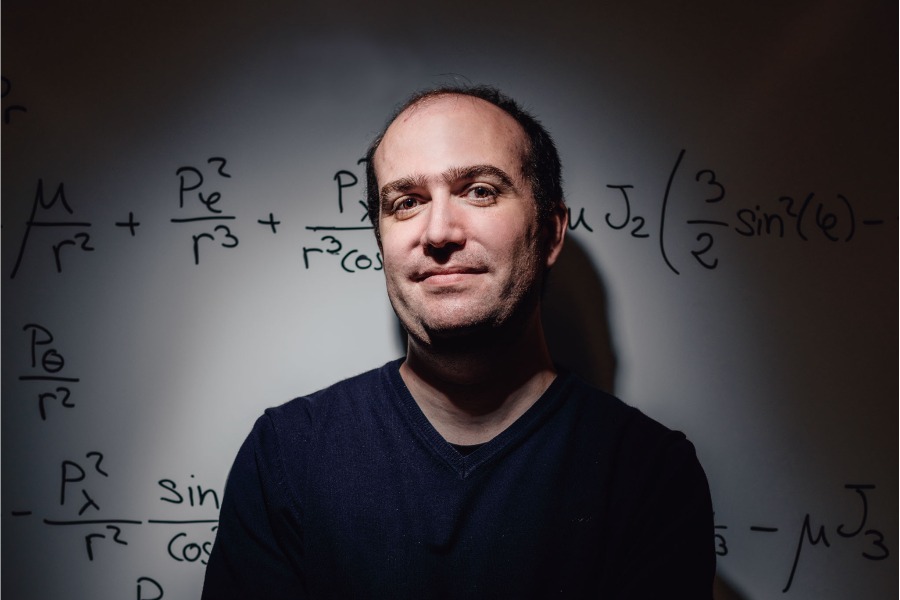Space has become critically congested, says David Arnas, assistant professor of aeronautics and astronautics. As a researcher of satellite constellations and their orbits, he believes we are reaching a turning point that will decide whether humans can continue to use space in our future.
"Satellites do not care about national borders, they only care about gravitation," he says. "Space is a common resource of humanity, just like water and air. Even if it seems very vast, it is still limited. It is our responsibility to ensure that future generations will also have fair access to it."
Arnas is creating mathematical models that can be a cornerstone of a future space traffic management system that would address the need of responsible and equitable use of space. These models, Arnas says, could optimize performance and reduce propellant use, enable higher satellite densities and reduce the likelihood of collisions in Low Earth Orbit (LEO).
His work contributes to Purdue’s Cislunar Initiative, which conducts a variety of research to enable better use of the space between the Earth and the moon.
While working for the European Space Agency, and later as assistant professor at Universidad de Zaragoza, Arnas saw satellite missions that changed their orbits in ways that seemed to block competitors from vying for that space.
"Are they doing these maneuvers to improve the performance of their system, or because they want to prevent competitors from launching or operating their satellites? It is not always possible to know exactly what the reason is, but just the fact that they have that power is disturbing," Arnas says.

David Arnas, Assistant professor of Aeronautics and Astronautics
Part of the cause of this competitive push is that the current system of satellite placement doesn’t allow much density. Currently, satellite systems’ orbital shells are separated by altitude, such that the oscillations of the orbits in one shell never enters the range of another. "But even circular orbits can have fluctuations of more than 12 kilometers in altitude," he says. "If you want to bring this distance down to less than 1 kilometer, you need accurate analytical models that are able to predict the maximum boundaries that orbits may experience under orbital perturbations."
One issue is that satellite dynamics don’t have analytical solutions, only numerical or analytical approximations — a problem compounded by a large number of satellites. Another issue is that Earth’s gravitational pull varies throughout an orbit, depending on the density of what’s below. "Earth’s gravitational field is less than ideal. Think of it not as a sphere or a spheroid, but more like a big potato," Arnas says.
Calculating these complex orbits numerically and at scale takes a lot of computing power and time. Arnas’ mathematical operations would be scalable to many thousands of satellites, and would give each spacecraft its own "slot" separated from others. In addition to allowing denser orbits, this would foster faster response in the event of a solar storm or other major event.
"By following these optimal distributions, we could assure that first, satellites are never going to produce conjunctions between them. This increases safety and reduces the fuel required to maintain missions," Arnas says. "Second, there will be more positions available, which ensures sustainability and fair access to future missions. And third, if an accident happens up there, these mathematical structures enable a quick and safe procedure to reposition satellites that could be in danger."
Creating order from the chaos, he says, is the only way future generations will have access to space.